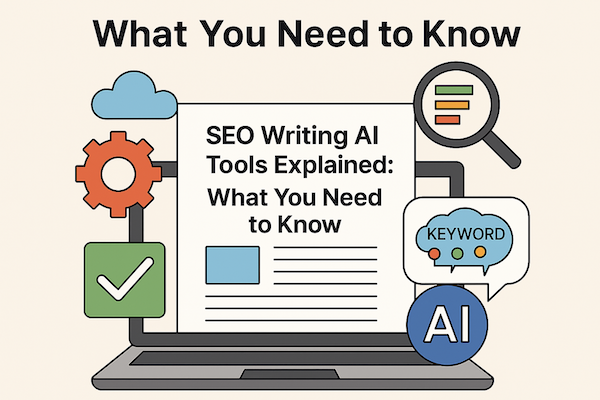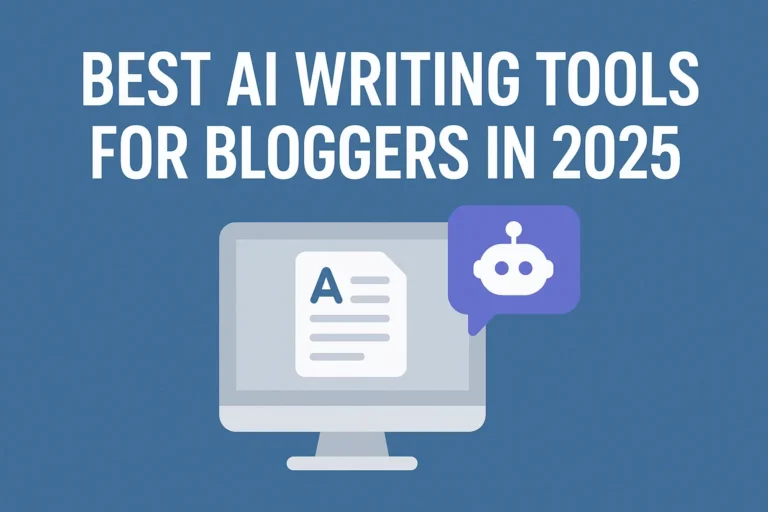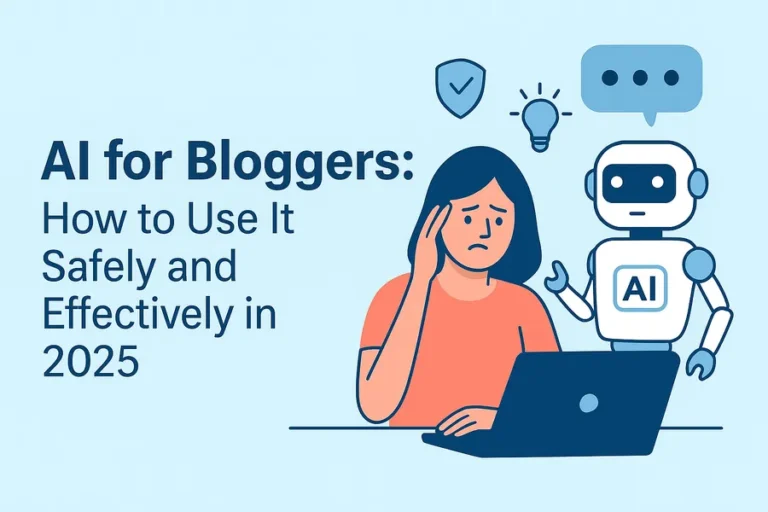SEO Writing AI Tools Explained: What You Need to Know
We use affiliate links. If you purchase something using one of these links, we may receive compensation or commission.

Introduction
“Good SEO is not about tricking Google. It’s about partnering with Google to provide the best search results for users.”
That quote by Phil Frost stuck with me the first time I read it—and honestly, it still echoes in my head every time I open a blank doc and think, Okay, how do I make this rank?
Writing is hard enough, right? But writing SEO-friendly content consistently? That’s a whole different beast. I used to spend hours tweaking titles, stuffing in keywords, analyzing competitors… only to have my content sit on page 5 of Google like it was in SEO jail.
That’s when I stumbled into the world of SEO Writing AI tools. At first, I was skeptical—thought it would spit out robotic content or just add fluff to my posts. But man, was I wrong. The right tool? It’s like having a smart, always-on assistant who understands what Google wants, helps structure your writing, and nudges you in the right direction.
In this post, I’ll break down what SEO writing AI tools actually are, how they work, and how you can use them to stop second-guessing your content and actually get results.
Let’s get into it.
What Are SEO Writing AI Tools?
I’ll be honest, when I first heard “SEO Writing AI,” I thought it was just a fancy way of saying “content bot.” You know, the kind of tool that generates five paragraphs of word soup with zero soul. But that’s not what these tools are about—not the good ones, anyway.
SEO Writing AI tools are smart writing assistants that help you create content with one goal in mind: ranking better on search engines without sacrificing quality. They’re not just about writing—they’re about optimizing as you go.
They usually combine natural language processing (NLP) with SEO features like:
- Suggesting related keywords (including semantically linked ones)
- Analyzing top-performing content for your topic
- Scoring your content in real-time based on how well it meets SEO standards
- Offering suggestions to improve structure, readability, and keyword placement
The good ones? They actually feel collaborative.
I’ve used tools like Surfer SEO, NeuronWriter, and Jasper AI, and while they each have their quirks, they’ve seriously changed how I approach writing. Before, I’d write a post, then retro-fit SEO into it. Now, I build SEO into the skeleton of the post from the start—and it feels way more natural.
Some tools also give you content briefs generated from real-time SERP analysis. That means they scan what’s already ranking and help you craft something even better. You’re not guessing what Google wants—you’re seeing it.
So no, they’re not just for lazy writers. They’re for efficient ones. For anyone who wants to write smarter, not harder. For people like you and me who want content that’s clear, human, and finds its way to page one.
How SEO Writing AI Tools Work
So, how does this AI magic actually happen behind the scenes? It’s not just algorithms throwing spaghetti at the wall. There’s a whole engine working under the hood—and once I got a feel for how it functions, I started using these tools way more effectively.
At the heart of it all is Natural Language Processing (NLP). That’s a fancy term for how computers understand and generate human-like language. When you type in a topic or keyword, these tools use NLP to figure out what kind of content matches that query. It’s not just about what words you use—it’s about how and where you use them.
Most SEO writing AI tools also pull data straight from the Search Engine Results Pages (SERPs). They look at the top 10 or 20 pages that are already ranking for your keyword and analyze things like:
- Common headings and questions
- Average word count
- Keyword frequency
- The structure and tone of top-ranking posts
- Semantic keyword relationships
And then—this is the fun part—they build content guidelines based on that analysis. I’m talking stuff like:
“Your competitors are using this keyword 7 times—you’re at 2. Want to bump that up?” Or:
“Hey, everyone’s including a section on ‘user intent’—you might wanna add that.”
There’s also this scoring system most tools use. If you’ve used Surfer SEO or NeuronWriter, you know what I’m talking about. You start writing, and this little meter goes from red to green the closer your content matches the ideal structure. I used to be obsessed with hitting 80+, but I’ve since learned that chasing perfect scores isn’t everything. It’s a guide, not gospel.
Another cool thing? Some tools are starting to integrate AI writers with real-time SEO optimization. Like Jasper connected with Surfer—so you’re generating AI paragraphs while optimizing them. It’s a two-in-one process, and it’s slick when it works.
Of course, it’s not foolproof. Sometimes the AI pulls weird suggestions or gives you super generic headings. That’s where your own brain needs to step in and say, “Thanks, but no thanks.”
Bottom line? These tools work by analyzing what’s already working, and helping you structure content that ticks the same boxes—but with your voice, your insight, and your spin on it.
Key Benefits of Using SEO Writing AI Tools
Let me tell you—once I started using SEO Writing AI tools regularly, I couldn’t imagine going back to the old “write first, optimize later” routine. It’s not that I couldn’t do it manually. I could. I did. But the time, the second-guessing, the rabbit holes of keyword research… man, it added up. These tools? Total game changers.
Saves Time Like Crazy
Seriously, this was the first thing I noticed. What used to take me hours—planning, researching, outlining, optimizing—got trimmed down to one streamlined process. A good tool basically hands you a content brief on a silver platter. No more opening 10 competitor tabs and scribbling notes in a Google Doc like it’s 2012.
Keyword Targeting Becomes Natural
I used to stress about keyword density: Am I using it too much? Too little? But AI tools make it feel organic. They suggest related terms, LSI keywords, and natural placement strategies that help you avoid stuffing. It’s like having a friendly editor whispering, “Drop it here… now here…”
Optimized Structure = Better Rankings
Most SEO AI tools push you to include things like relevant H2s, FAQs, and internal links. And guess what? Google loves that stuff. The first time I used an AI-optimized outline from Surfer and followed it closely, I watched that post climb from page 3 to the top 5 in just a few weeks—with zero backlinks. It wasn’t magic—it was structure.
Improves Readability Without Sacrificing Depth
A lot of these tools flag long, messy sentences or clunky transitions. And while I don’t always take their advice (sometimes I like rambling), I’ve learned how to clean up my flow without making things sound robotic. Readers stay longer, bounce less, and actually read what I’m saying. Win-win.
Helps Rank for Snippets and People Also Ask
This one surprised me: when I started using AI to structure answers into short, clear paragraphs and included semantically related questions, I started snagging featured snippets. Not always, but enough to make it feel like the tool was paying off in spades.
And honestly, one of the biggest benefits? Confidence. When I hit publish now, I know the content is solid. Not just “I hope this works” kind of solid, but “this has a real shot at ranking” solid.
Common Features You’ll Find in These Tools
If you’ve never poked around inside one of these SEO writing AI tools, let me paint you a picture: it’s like stepping into a dashboard that was designed by your smartest, most organized writing friend—if that friend was also a little obsessed with Google’s algorithm.
Here’s what you’ll typically find inside most of the good ones:
Real-Time SEO Scoring
This one’s addicting. You’ll see a score—usually from 0 to 100—that updates as you write. Add an H2? Score jumps. Hit the right keyword density? Boom, more points. It’s like a video game for content nerds. But don’t get too hung up on chasing 100—it’s a guide, not the law.
Keyword Suggestions (Not Just the Obvious Ones)
The tools pull in primary keywords, long-tails, and even semantic keywords you wouldn’t have thought of on your own. Stuff like “on-page optimization” or “content brief generator” pops up for a main term like “SEO writing AI.” It widens your topical coverage, which helps with search engine context.
Competitor Content Comparison
This one blew my mind. Tools like Surfer and NeuronWriter show you exactly what your top-ranking competitors are doing—how long their posts are, what headings they use, even which keywords they missed. It’s like spying, but totally ethical.
Outline and Brief Generators
Don’t know where to start? Let the tool build you an outline based on real SERP data. I use this when I’m blanking out or just don’t want to start from scratch. You can always tweak it later—but it gives you a clear roadmap upfront.
Readability and Engagement Metrics
Most tools will flag if your sentence is too long, your paragraph too dense, or your tone too stiff. They even suggest transitions to improve flow. I don’t always agree with the suggestions, but when my brain’s fried? They’re a lifesaver.
FAQ Suggestions Based on People Also Ask
These tools often suggest questions you can answer in your post to increase your chances of grabbing a featured snippet. Stuff straight from the “People Also Ask” box. All you gotta do is answer them clearly and concisely.
Integrations with Google Docs, WordPress, etc.
Some tools offer plugins or extensions, so you don’t have to write inside their interface. Jasper works with Docs, and Surfer integrates directly into WordPress with certain SEO plugins. Saves me a ton of back-and-forth copying.
Honestly, the more you explore these features, the more they become second nature. It’s not just about writing faster—it’s about writing smarter, with direction.
Potential Limitations and What to Watch Out For
Okay, time for some real talk. As much as I rely on SEO writing AI tools, they’re not perfect—and they’re definitely not magic wands. I’ve hit a few snags along the way, and if you’re going to use these tools wisely, you gotta know their weak spots.
Over-Optimization Is Real
Ever had a tool tell you to repeat the keyword one more time, even though it already felt crammed in? Yeah, me too. If you follow the score too obsessively, you can end up with content that reads like it was written for a search engine, not a human. That’s when readers bounce. Trust your gut—sometimes 80% optimized is better than 100% robotic.
Not All Tools Are Affordable
Some of these platforms aren’t cheap. I remember signing up for a “pro” plan just to realize later that most features I needed were locked behind even higher tiers. There are free options or trials, but if you’re on a budget, do your research before committing. And always cancel those auto-renewals if it’s not working for you.
They Can’t Replace Human Voice
Here’s the thing: AI can generate outlines, analyze SERPs, suggest keywords—but it still can’t replicate you. Your stories, your tone, your humor? That’s what readers connect with. I’ve seen content written entirely by AI and it usually feels… soulless. Like a corporate manual trying to be a blog. So keep your voice in there. That’s what makes content worth reading.
Suggestions Aren’t Always Accurate
Sometimes the keyword suggestions are weirdly off-topic. Or the content brief misses a key point that should be in there. These tools are powerful, but they still need a human editor—aka you—to make judgment calls. I’ve learned to treat AI outputs like a rough draft, not a final say.
Learning Curve for Beginners
If you’ve never worked with AI tools or SEO before, the dashboards can be overwhelming. Tons of metrics, suggestions, and color-coded warnings—it’s a lot to take in. But once you mess around with them for a week or two, it clicks. The key is not to let the overwhelm stop you from experimenting.
The bottom line? These tools are helpers, not replacements. Use them to level up, not to check out. Be the human behind the machine, and you’ll get way better results.
How to Choose the Right SEO Writing AI Tool for You
Choosing the right SEO writing AI tool isn’t about grabbing the most expensive or most hyped one—it’s about finding the one that fits you. Your goals, your workflow, your budget. I’ve tried more than a few (some hits, some total misses), and here’s what I wish I knew before swiping the card.
Start with Your Content Goals
What do you actually want to create?
If you’re mostly writing blog posts, tools like NeuronWriter or Surfer SEO are solid—they’re built with bloggers in mind. If you’re writing copy or product descriptions, something like Jasper AI with its tone-of-voice flexibility might be better. And if you’re doing everything? Well, versatility matters.
Look at Features You’ll Actually Use
I made the mistake of picking a tool that had dozens of features… but I only used two. Ask yourself:
- Do you want real-time scoring?
- Built-in keyword research?
- Outline generation?
- Competitor analysis?
If you’re not gonna use all the bells and whistles, why pay for them?
Try the Free Trials First
Almost every decent SEO AI tool offers a free trial or a money-back guarantee. Use it! Seriously, give yourself a weekend to mess around inside the dashboard. If it clicks with your brain and workflow, great. If not, move on. I tried three tools before I found my current go-to.
Consider the Interface and Ease of Use
Some tools are intuitive; others feel like they were designed by robots for robots. If you’re a beginner, a cluttered interface can kill your momentum. I liked Surfer’s clean layout right off the bat—Neuron took me a bit longer to warm up to, but it was worth learning.
Check for Platform Integration
If you’re a WordPress user like me, check if the tool integrates directly with your editor. Nothing worse than switching between tabs every five minutes. Some tools have Google Docs extensions, others link up with your CMS or plugins like Rank Math or Yoast.
Pricing Matters (But Don’t Let It Scare You Off)
Some of these tools look expensive at first glance—$29, $59, $119/month—but remember: if it saves you 10+ hours of manual SEO and helps a post rank faster, it might be worth it. That said, if you’re just starting out, there are budget-friendly options like Frase, INK, or even ChatGPT + a good SEO checklist combo.
So don’t just jump on the first tool someone on YouTube raves about. Make a list of your real needs. Try a few out. And remember: the “best” tool is the one you’ll actually use.
Tips for Getting the Most from Your SEO Writing AI Tool
Alright, you’ve picked a tool, fired it up, and now you’re staring at a blinking cursor and a content score stuck at 42. Been there. The tool’s powerful, but how you use it really makes the difference. After a lot of trial, error, and facepalms, here are my go-to tips for squeezing every drop of value out of your SEO writing AI tool.
Let AI Guide You, Not Control You
This is a big one. It’s tempting to follow every suggestion and turn your article into a keyword-filled Frankenstein monster. Don’t. Use the tool like a compass, not a GPS. Let it steer the direction, but you’re still the driver. I always review its suggestions with the question, “Does this help my reader?”
Don’t Force Keywords—Blend Them In
If a suggested term doesn’t fit naturally, I leave it out or rephrase the sentence until it flows. I’ve found I get better results with slightly lower scores but smoother writing. Your goal isn’t just to rank—it’s to rank and keep readers engaged.
Analyze, Then Outshine Your Competitors
Use the SERP analysis to your advantage. See what competitors are doing—then do it better. If their H2 says “What Is SEO AI?”, I’ll expand mine into a mini-guide with examples. Don’t copy—out-teach, out-help, out-human them.
Use the Outline Generator When You’re Stuck
There’ve been times when I’m staring at a keyword and my brain is just… toast. That’s when I fire up the AI outline tool. It gives me a decent structure, even if I end up reworking half of it. Sometimes you just need a jump-start.
Mix With Manual Research for Depth
This one’s underrated. I still Google stuff on my own—forums, Reddit threads, expert blogs—and bring in insights that the AI doesn’t catch. That’s how you keep your content fresh, original, and useful. The AI sets the framework, you fill in the gaps with the good stuff.
Save Your Favorite Prompts or Setups
If your tool has templates or lets you save custom setups, use that. I’ve got one for product reviews, one for blog how-tos, and one for SEO tutorials. It saves me a ton of setup time each week.
And This Might Be Weird, But… Talk Out Loud
Sometimes when I feel the content sounding stiff, I literally read it out loud—or even talk through a section as if I’m explaining it to a friend. Helps me keep things human. AI tools don’t care how you get there—they just want the words on the page.
The real secret? These tools give you superpowers, but you still have to train. The more you use them, tweak them, and understand what they’re doing, the more they become second nature. Pretty soon, you’ll be optimizing like it’s no big deal.
Conclusion
SEO Writing AI tools aren’t just another shiny thing in the content creator toolbox—they’re legit time-savers, idea generators, and optimization buddies. When I first started using them, I’ll admit, I thought they were kinda gimmicky. But now? I can’t imagine working without them. They help me write faster, rank better, and honestly—they’ve made writing fun again.
But here’s what I’ve learned the hard way: you’re still the writer. These tools can guide you, analyze for you, even suggest killer phrases—but they can’t tell your story. They can’t inject you into your content. That’s your job, and it’s the part that keeps your readers coming back.
So here’s my advice—take the time to try out a few of these tools. Mess around with them. Push buttons, break things, figure out what clicks. You don’t need to be a tech wizard or a pro copywriter to make them work—you just need to be curious.
And when you hit publish on your next piece, knowing it’s optimized and still sounds like you? That’s a good feeling, my friend.
If you’ve already been using an SEO writing AI tool, I’d love to hear which one’s your favorite—and what tricks you’ve picked up. Drop a comment or shoot me a message. Let’s help each other write smarter, rank higher, and keep it human.






